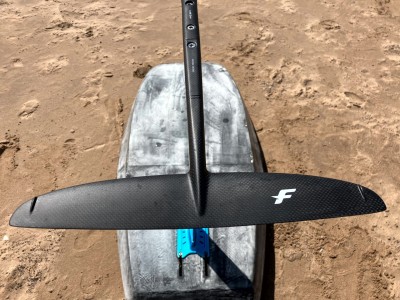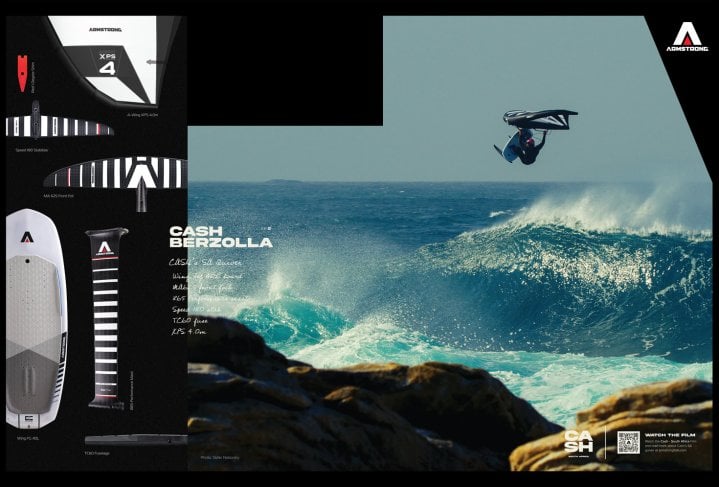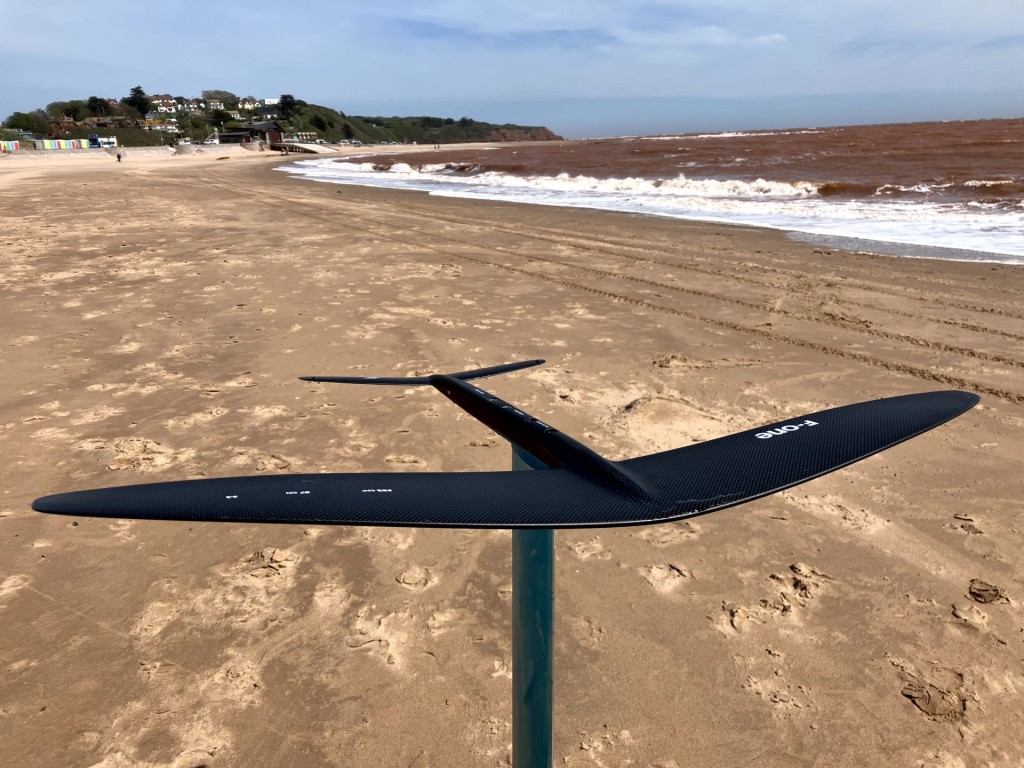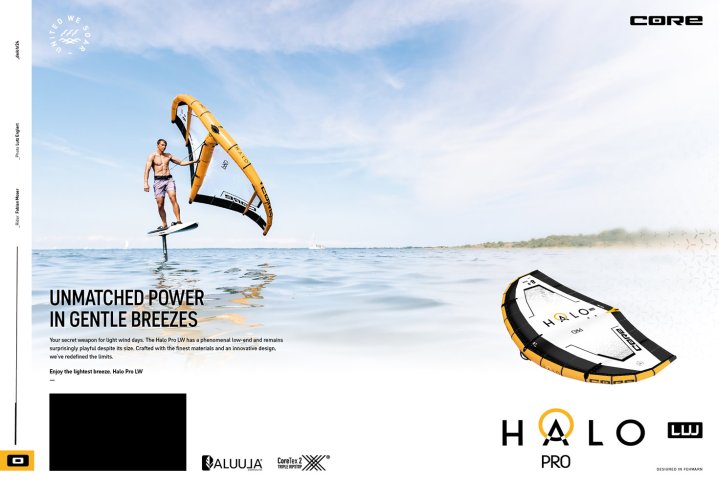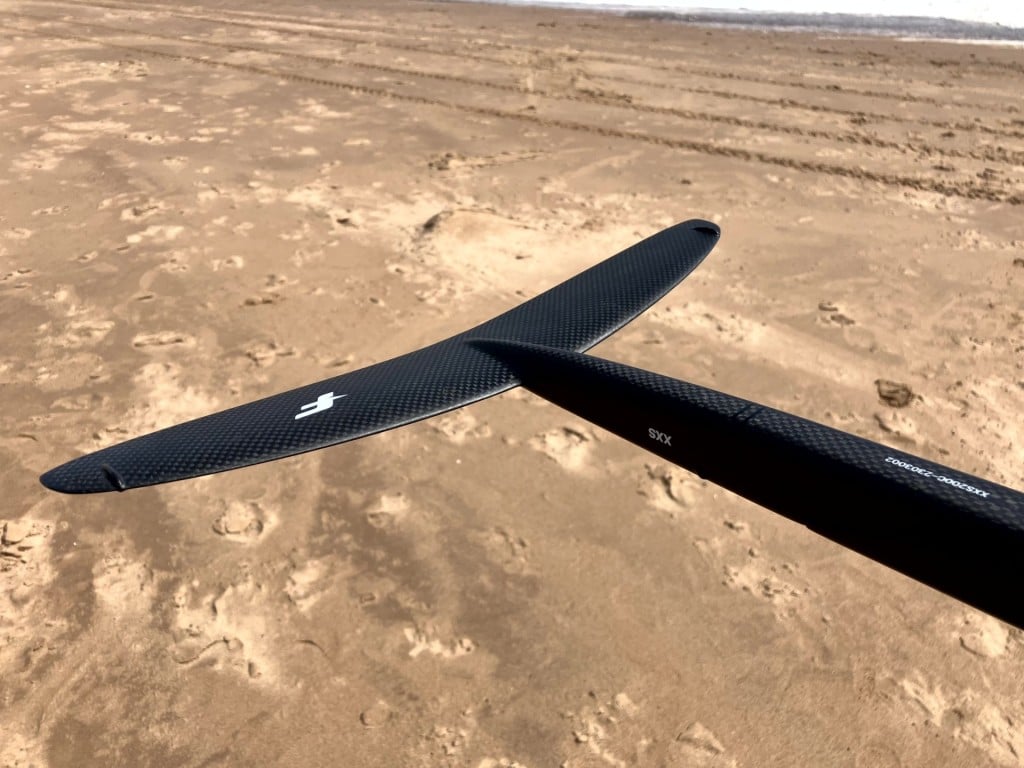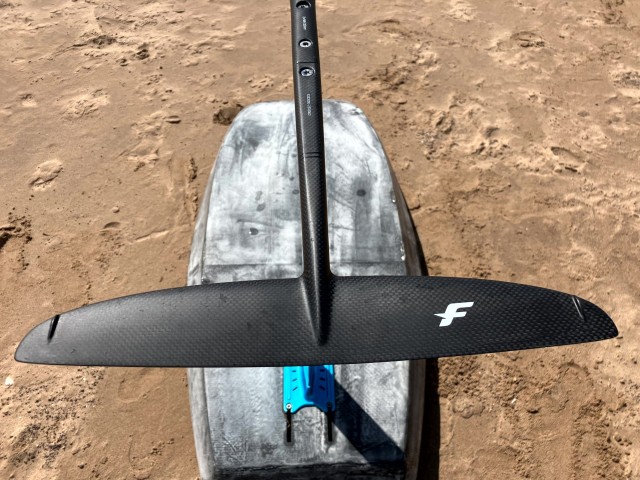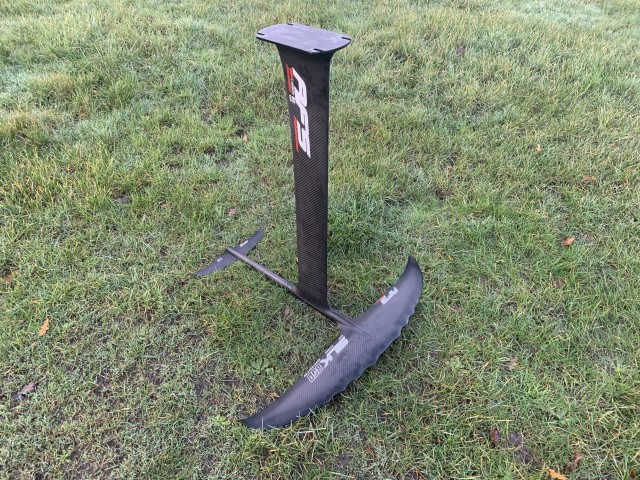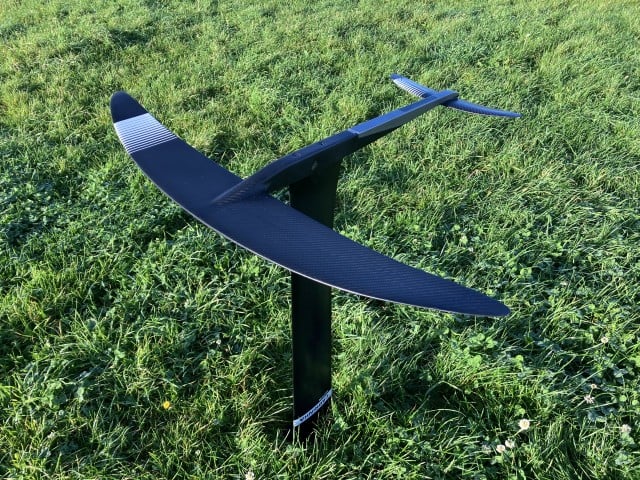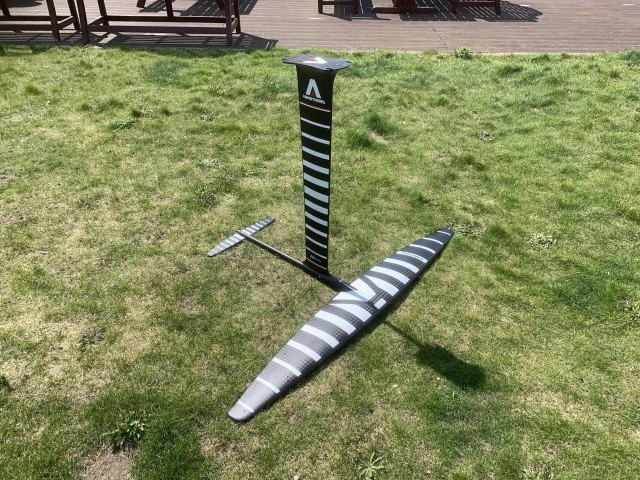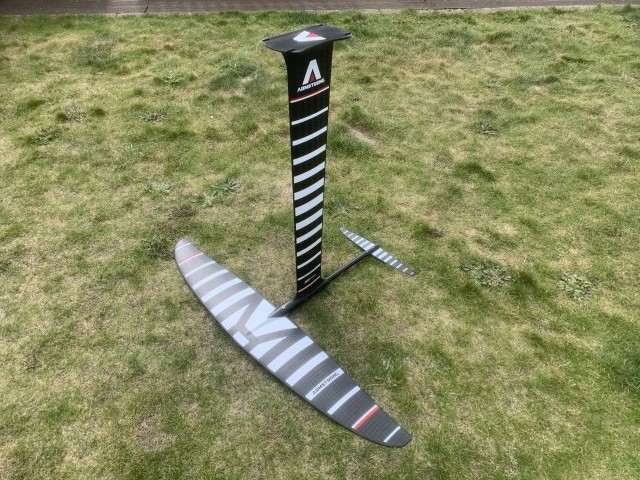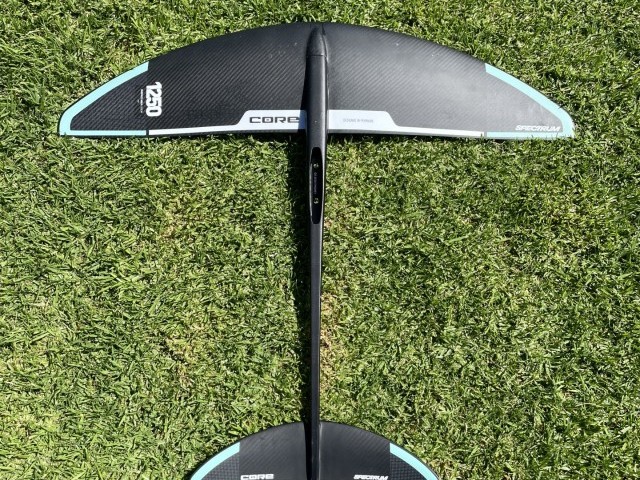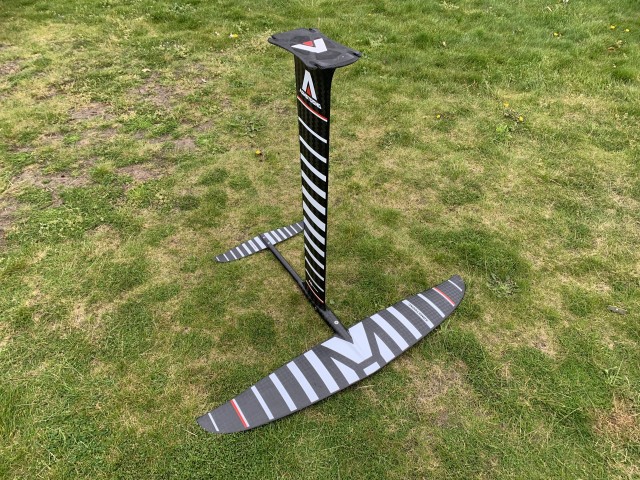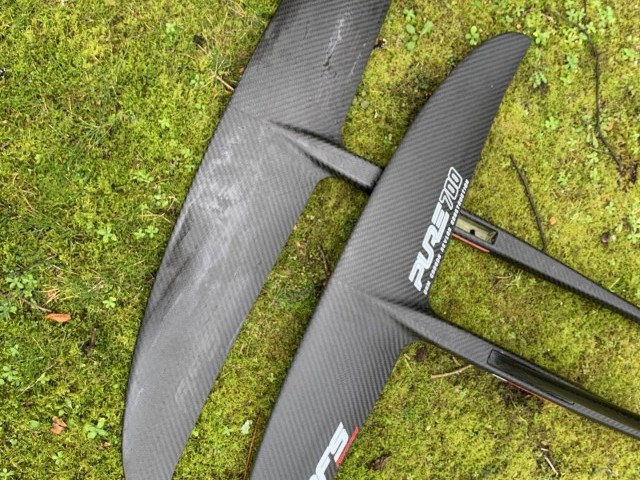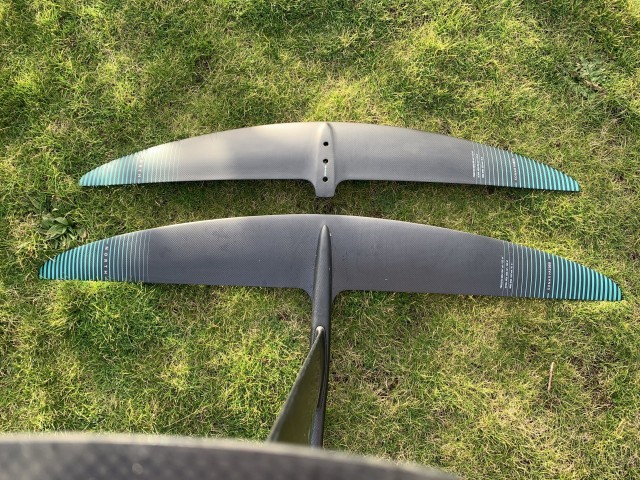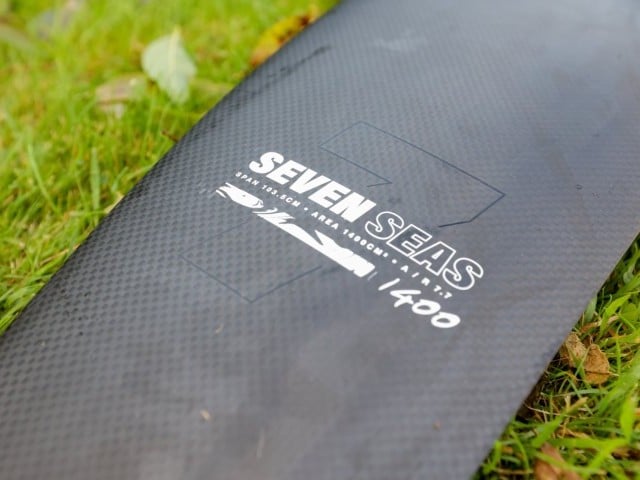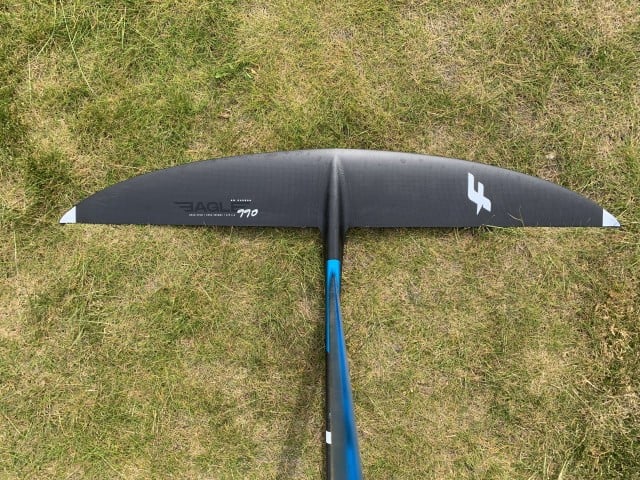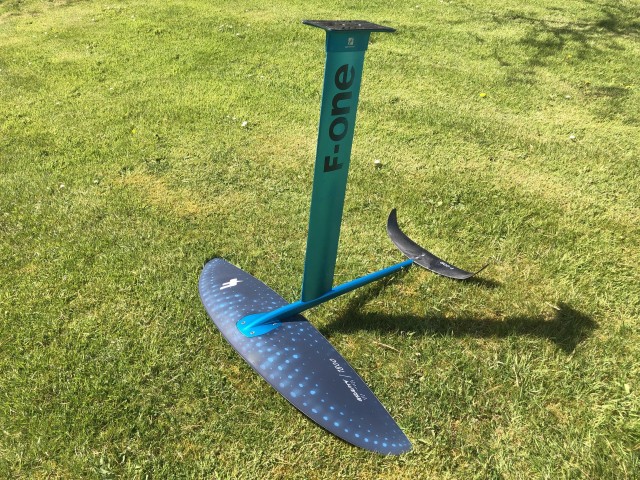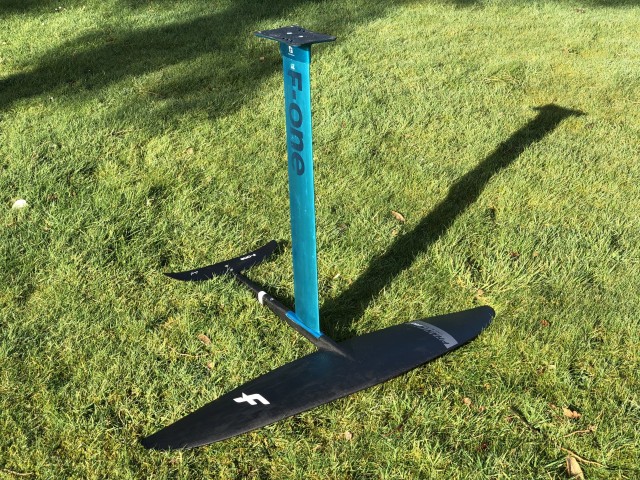At A Glance
The F-One Sk8 is ‘designed for surfing’. Whatever foiling discipline you choose to use the Sk8 for, it promises the control, manoeuvrability, and glide to surf the wave. Does it live up to the tagline? “This foil doesn’t just turn; it carves!”
The Sk8 is a performance mid-to-high aspect foil (A/R: 8.0) available in sizes from 550 to 1050 cm2. Given the higher relative spans associated with higher A/R wings, F-One only offers the Sk8 in their carbon construction to ensure adequate rigidity. As with all of their carbon wings, this includes the monobloc construction methodology, which incorporates the front wing and the majority of the fuselage (including F-One’s Titan mast connection) in one piece. This guarantees optimal stiffness and durability while minimising drag by removing unnecessary connection points and overlaps. In addition, the Sk8 utilises high-modulus carbon in the layup and is a very nicely finished piece of kit.
With the release of the Sk8, we also saw the introduction of the monobloc tail range. The monobloc tail incorporates the rear wing and rear fuselage sections into one piece. Therefore, the entire foil plane setup is just two pieces, requiring just two bolts! It definitely speeds up assembly. The monobloc tail is optional, and you can still use a separate fuse and rear wing instead if you wish to retain a cheaper way of swapping out rear wings or if shimming is particularly important to you. I’ve had it on good authority from the boffins at F-One that the stiffness and hydrodynamic benefits of the monobloc tail outweigh any gains that could be made from shimming the regular setup, and you don’t suffer any of the associated downsides of shimming.
Having selected the 950cm2 foil to try (rider weight ~ 85kg), this included the XXS 200cm2 monobloc ‘carving’ tail. Both the front and rear wings have pretty thin profiles, a good amount of downturn (presumably to keep the tips lower during roll), and similar unassuming wingtip designs. The rear wing features F-One’s fences, little ridges in the direction of travel close to the wingtips, but the front wing does not.
On The Water
I was so keen to try this foil out that my first sessions were actually kitefoiling, not the intended use case but extremely fun nonetheless. I’d argue that it isn’t common practice to use a foil of this size and A/R combo on a relatively short mast and small board because of the associated wing span. For the purpose of this review, however, I’m glad I did have these sessions. They allowed me to witness with my own eyes the ease with which this foil handles tip breaches (front and rear). While cranking upwind (which it does very well winging also!) the tips were regularly above water, and had I not been looking, I’d have never realised as the foil just flew on as though nothing had happened.
Having had a couple of sessions on the kite to familiarise myself with the foil, I was blessed with some prime winging conditions with plenty of shoulder-to-head high swell. I made a point of getting into both unbreaking lumps and peeling waves, and as soon as you depower the wing and surf, it comes alive in both. You can feel the iterative nature of foil design in the Sk8 because, if you had to sum it up in one sentence, it is the love child of the Eagle and the Phantom. It has many of the positive characteristics of each, with few of the downsides.
The Sk8 has that familiar high-speed glidey feeling of many high-aspect foils. It is happy to ride fast, rockets upwind, and points high without too much load on the wing (and, therefore your arms!). As long as you’ve got good pitch control, it’ll benefit your tacks and gybes as it retains the speed for a long time, and thanks to the short fuse/tail combo, it can turn very tight, too, so you should have plenty of time to figure out what you’re doing with the wing in the meantime. Compared to the higher AR foils, it is so much more playful. It almost encourages you to mess around and carve.
As you’d hope, the Sk8 is very impressive once on the wave. It has a unique ability to both draw out powerful carves when the wave allows and release and snap with minimum effort when you want to quickly re-align yourself at the top of the face. It is definitely one of the best foils I’ve used to allow you to ride with both styles, depending on what you fancy and what the wave allows. As well as having the top end to deal with high-speed lumps or peeling waves also accelerates out of carves rather than getting bogged down. While it harnesses wave energy very well, if you’re riding wind swell with a small peak, you must utilise the Sk8’s carving ability to stay with the energy of the wave. It has more than enough efficiency to ride small waves, but if you try and go in a straight line forward or along the swell line, its speed will have you flying in front of or away from the peak in no time.
If you like your wave riding, I’d recommend trying one of these. Just know that you’ll want to have a good amount of power and an efficient board for your first few sessions while you get used to the start technique. Once up on foil, it has a pretty impressive low stall speed for a small, thin-profile foil, but it does take some speed to get it going in the first place. So you’ll likely have to modify your foil pumping technique slightly, and unless you’re pretty darn overpowered, you won’t be doing the old ‘sheet and go’ too often, and you’ll be glad of a board optimised for a foil of this kind.
Overall
Anyone who’s tried the current generation of HA foils and loved the speed and glide but really wanted it to be more playful, carve better and tighter, and actually handle wingtip breaches as well as the marketing team promised, should seriously consider the Sk8. It is one of those foils that would surely tick the box for me as a one-stop shop for wing/prone/kite.
Videos
This review was in Issue 16 of Tonic Mag.
For more information visit F-OneRelated
By Liam Proctor


